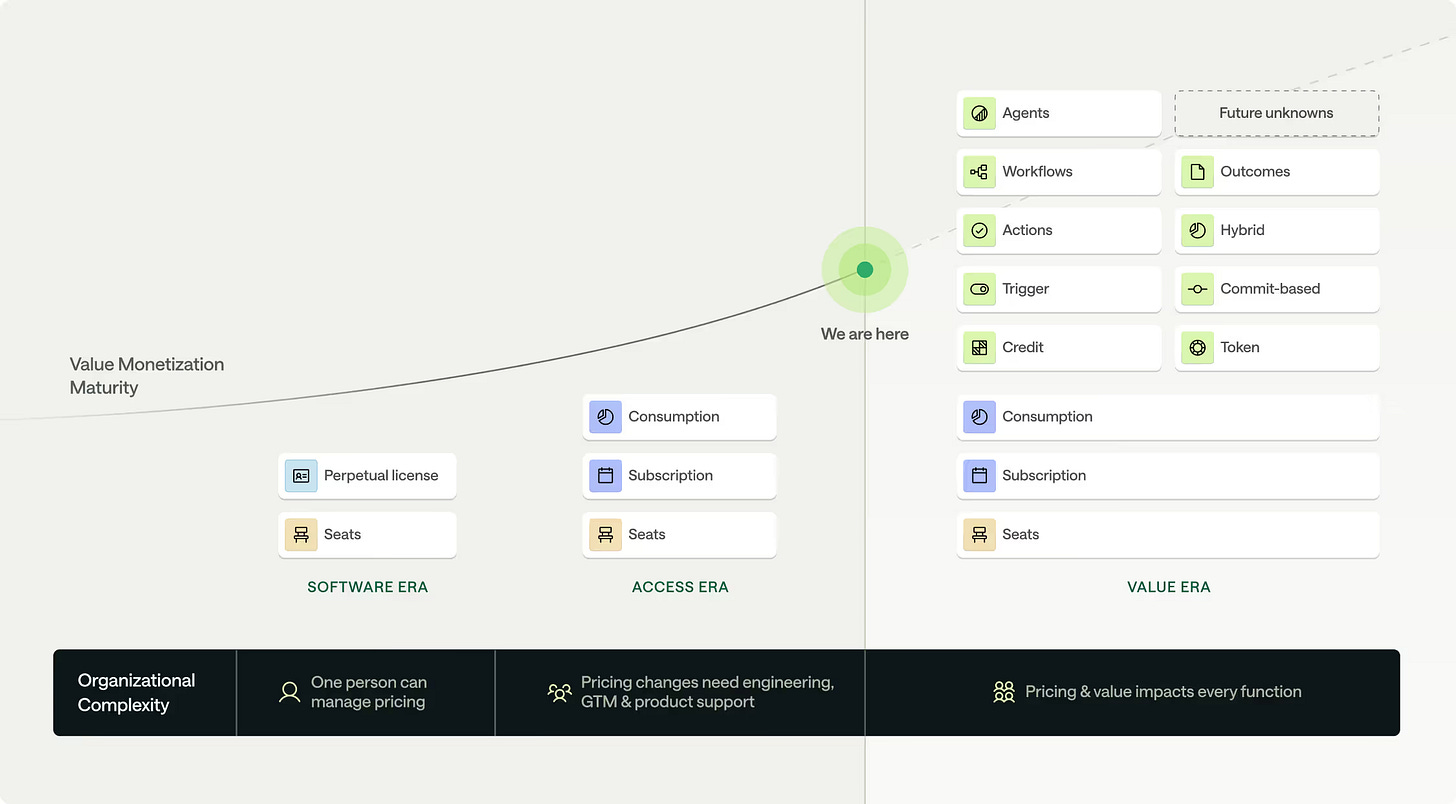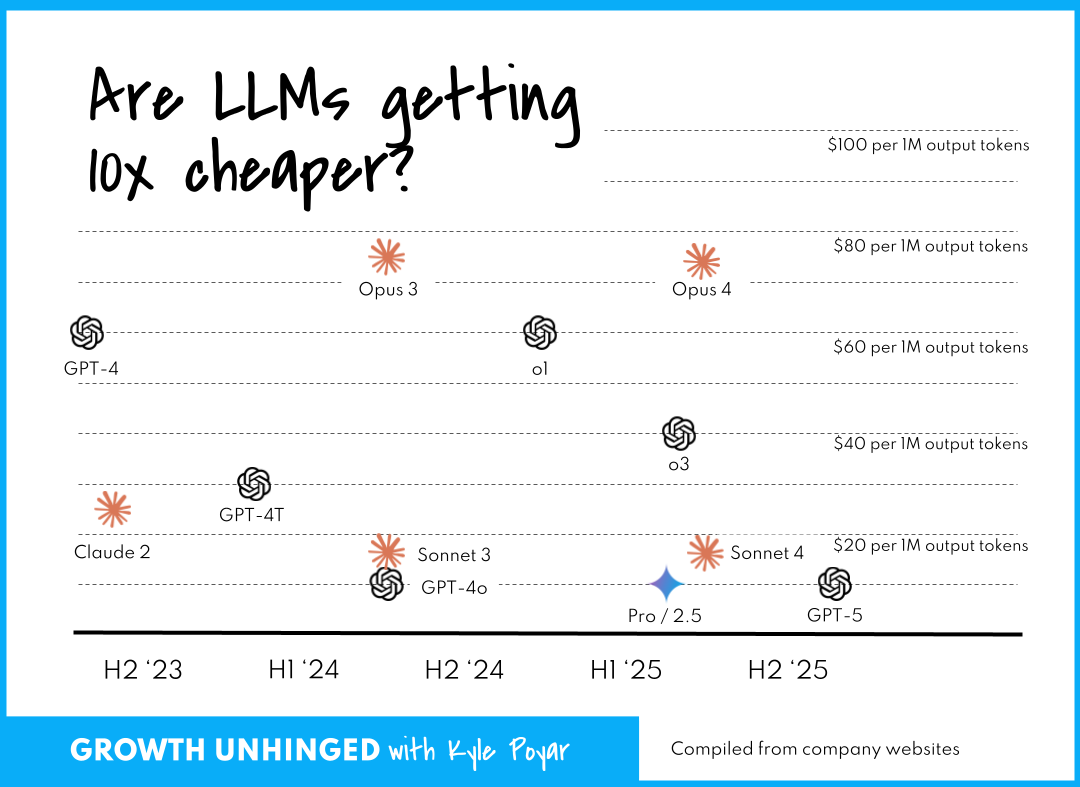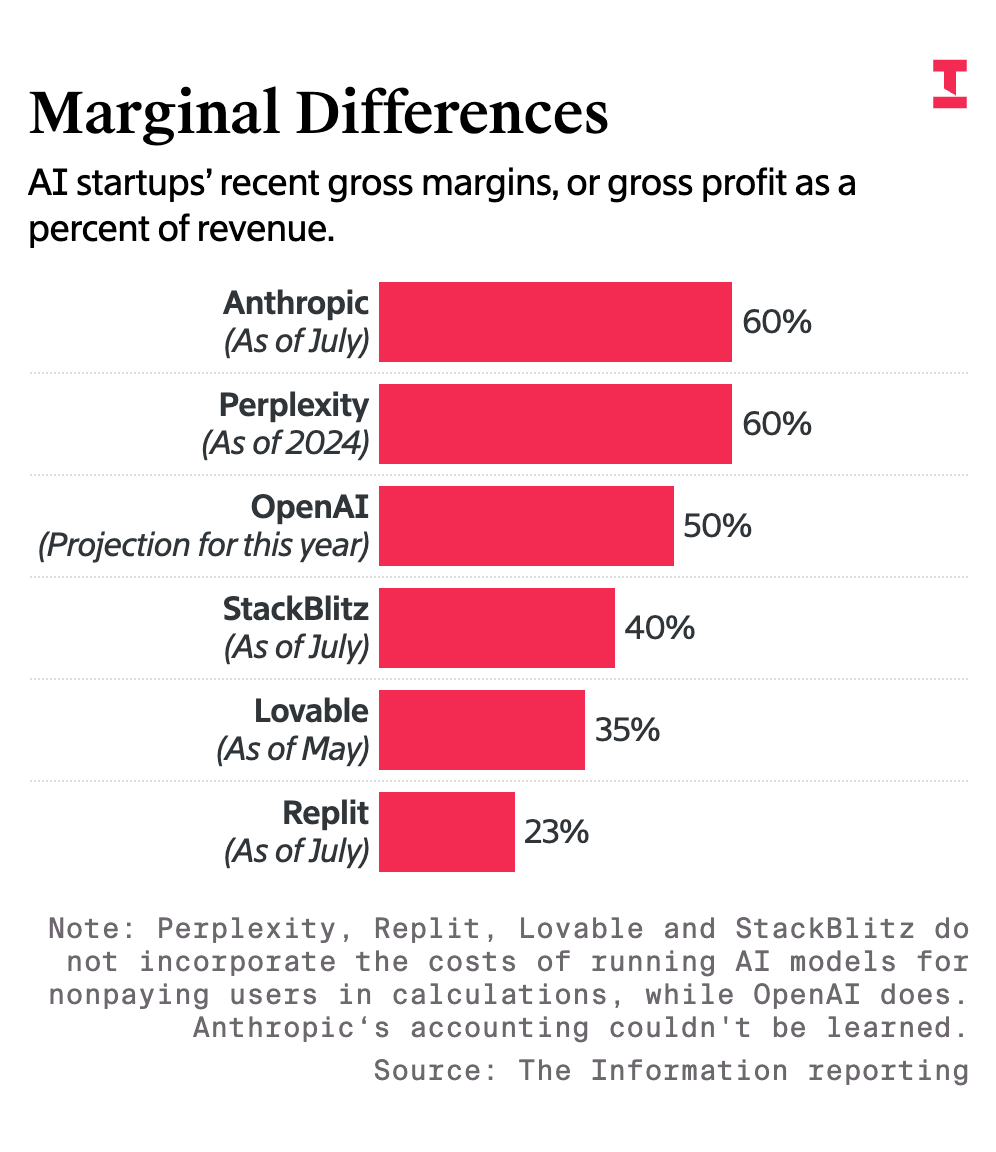Why everyone’s switching to AI credits
OpenAI and Salesforce aren’t the first to introduce credit-based pricing, but they’ll make it much easier for you to do it

My friends at Metronome just launched a 🔥 new report about what they’re calling The Monetization Operating Model. It unpacks the shift from charging for access to charging for value and why it’s not a simple pricing change. This shift is powerful, but chaotic — impacting sales, marketing, product, eng and finance.
I’ve been talking about what’s happening for a while. This report shows you exactly how to evolve with details on billing, experimentation, pricing logic, data and more. Check it out here.
Microsoft announced AI credits for Copilot in Microsoft 365 in January. Salesforce added a new flexible, credit-based model for their AI agent in May. Cursor shifted to credit-based pricing in June (and faced some real pushback from users). Not to be outdone, OpenAI recently replaced seat licenses with a pooled credit model for its Enterprise plans.
Credit-based models have been gaining popularity for at least the past year. I’ve seen the model adopted by the likes of Adobe, Apollo, Asana, Atlassian, bolt.new, Clay, HubSpot, Google, Lovable, monday, Replit, v0 and many, many others.
Most AI spend is probably now in the form of credits, which are also referred to as tokens, AI units, generative credits and flex credits. While none of the big players are the first to introduce it, they’ll make it much easier for the next company to sell AI credits.
The main roadblock to faster adoption has been getting buyers to accept it. Credit-based pricing can be hard to predict, hard to manage, and feel like a black-box. And nothing scares procurement more than runaway costs with no visibility.
But large incumbents shifting to this model validates that it’s a ‘standard’ way to buy AI apps. Salesforce and OpenAI are doing the hard work of educating the market, making it easier for startups to replicate it. And, presumably, these companies are making these moves after extensive research with customers – indicating that a lack of predictability isn’t an insurmountable roadblock.
Today I’m unpacking why credits are suddenly everywhere and how to get credit-based pricing right.
Why everyone’s switching to AI credits
Many folks predicted that AI costs would drop 10x every year. That would, in theory, allow folks to sacrifice margin today – heck, even take a negative gross margin – and then reap the rewards very quickly. In this world, distribution was the only thing that mattered.
Pricing could be optimized later. And most launched with simple all-you-can-eat subscriptions or traditional seat-based pricing.
This isn’t playing out. Older models are getting cheaper. But the latest models are still fairly expensive and “nobody wants yesterday’s newspaper”. OpenAI’s GPT-5 costs $10 per million output tokens – not much cheaper than where GPT-4o was priced in early 2024.
Meanwhile token consumption is exploding as folks trust AI with bigger, more complex tasks. We’re not just summarizing meeting notes. We’re asking AI for help with coding, reasoning, deep research and agentic tasks.
In my experience, 70-80% of token consumption comes from just 10% of users. These heavy users can become very unprofitable without the right guardrails. And AI gross margins are already challenged based on reporting from The Information, leaving little room for further erosion.
To summarize: AI isn’t necessarily getting cheaper, there’s a wider disparity in costs and capabilities, and there’s increasing potential for skyrocketing usage from power users.
Credit-based models are uniquely suited to accommodate this complexity. Customers see a pool of usage that feels relatively straightforward (“50 credits per month”). Vendors, meanwhile, can easily adapt credit pricing to monetize newer, higher value actions, navigate evolving LLM costs, and nudge customer behavior in a way that’s win-win.
Credit-based models also allow companies to include some AI usage “for free” for existing customers or in free plans, and they let customers decide exactly how they want to use those credits.
What credits actually mean in practice
Keep reading with a 7-day free trial
Subscribe to Kyle Poyar’s Growth Unhinged to keep reading this post and get 7 days of free access to the full post archives.





